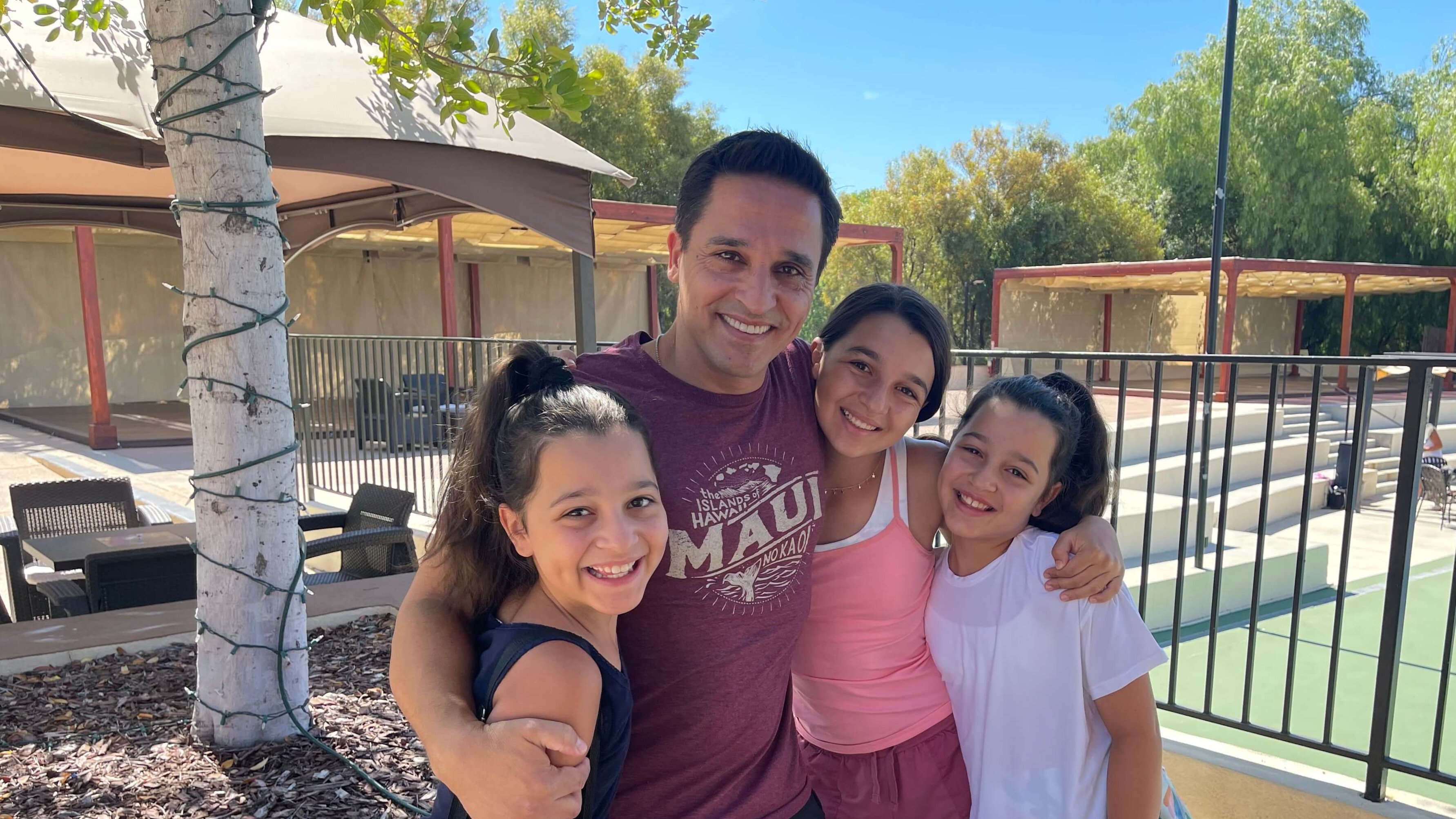Get active in 4 steps! Why young people need movement for mental health
April 30th, 2025 | 4 min. read

Kids and teens are stressed out.
Whether it is global issues, family challenges, or the social dynamics at school, young people are reporting higher levels of anxiety than ever before. And the 24/7 access to social media is not helping!
Meanwhile, parents face trying to help their children navigate a world that is operating in uncharted waters while traversing their own struggles with mental health.
Now more than ever, it is time to develop healthy and sustainable habits to support you and your children. Several lifestyle practices are proven to help, but none are as effective as consistent physical activity.
The Paseo Club is a social club in the Santa Clarita Valley that has supported families for over twenty years. We offer many programs for kids and adults of all ages and interests — including summer camp.
In this article, you will learn how movement and mental health are linked, common obstacles to getting young people active, and how to support your child in finding exercise they love.
 The Science of exercise and mood
The Science of exercise and mood
The most important fact about the link between physical activity and mental health is that exercise literally changes brain chemistry. This is true for both kids and adults.
Movement — of any type — increases levels of feel-good hormones, including serotonin and endorphins, instantly flooding your body with positive feelings. Simultaneously, the stress hormones cortisol, epinephrine (adrenaline), and norepinephrine (noradrenaline) drop.
This magic elixir helps tension, worries, anxiety, and depression lessen, allowing room for more optimism and more calm. Being active can also build your child’s self-esteem and improve their relationship to how they feel about their body.
- Improved Mood
- Improved Sleep
- Reduced Stress
- Reduced Anxiety
- Increased Self Esteem
- Building Healthy Habits
- Improved Cognitive Function
 Obstacles to getting your child off the couch
Obstacles to getting your child off the couch
Time
Parents and kids tend to have demanding weeks. Most parents work full-time, if not more, and kids are often in school and daycare all day long.
Pro tip: If your child is young enough to be in an afternoon care program, make sure to review the daycare’s policy on screens, time outside, and any organized games or physical activities.
After school is the prime time to get your older child to the gym, the field, the dance studio, or wherever they most enjoy being active.
Weekends should also include some physical activity. See the Make an Active Family Culture section below for ideas.
Screens
Children are on screens more than ever before. The American Academy of Child and Adolescent Psychiatry reports that children ages 8-12 spend 4-6 hours a day using screens, and teens spend up to 9 hours. Generally speaking, screen time equals sedentary time. Therefore, a child’s time on their devices is the number one obstacle for parents who want to get their children more active.
Pro tip: Setting limits on screens is beneficial because it helps to create time for your child to do other activities, including spending time with the family, socializing with peers (IRL), and moving their bodies.
 Not a Jock
Not a Jock
Not every child naturally gravitates toward group sports. However, if your child has not found physical activities to be fun and engaging when young, they can feel disconnected from all movement as they age. According to research, “Adolescents who play sports are eight times more likely to be physically active at age 24 than those who do not play.”
Pro tip: Do not let your child give up. Expose them to many types of movement until they find one (or more) they like. This will benefit them in the short term and create life-long positive associations with physical activity.
4 Steps to make movement fun for all kids
1. Sneak it
Sneak physical activities into your child’s weekly routine in the same way you snuck spinach into their pasta sauce when they were too picky to eat it as a toddler.
- Walk more by parking further away from your destination
- Play games together, such as tag, races, and Mother May I?
- Task them with home chores such as gardening, sweeping, and washing windows
2. Create an active family culture
Build movement into family time. People of all ages enjoy recreational swimming, bike rides on the paseos, or a hike in Placerita Canyon. Your teen can also learn to exercise at the gym with you by learning from a trainer or taking a youth fitness class. Exercising together can be a fun and bonding experience.
 3. Explore non-competitive or solo sports
3. Explore non-competitive or solo sports
Kids sometimes think that if they don’t want to join their friends on the soccer field or the basketball courts, then they are not athletic. To prevent them from falling into a simplistic categorization of “us” and “them,” they need to experience all types of movement. Eventually, they will find one that clicks.
- Yoga
- Hiking
- Biking
- Karate
- Pilates
- Jogging
- Rock climbing
- Dance/Zumba
- Weight lifting/Conditioning
4. Find a supportive environment
It is unfortunate, but there are still coaches who push kids hard to win using criticism and punitive behavior to motivate them.
Many kids do not thrive in high pressure environments. Look for coaches and athletic instructors who are encouraging and focused on team building and striving for personal bests.
How much physical activity is enough?
Children ages 6 to 17 should get at least one hour of moderate to vigorous physical activity each day, or seven hours per week in total. Aim for them to get a mix of exercise — aerobic, muscle strengthening, and mobilization. Remember, all physical activity counts — playing four square at recess, walking the dog, cleaning their room, and rollerblading with friends.
 The Paseo Club has programs for your child
The Paseo Club has programs for your child
The Paseo Club has served the Santa Clarita community for over twenty years. What once started as a tennis club has grown into an eight-acre social club with tennis, pickleball, Pilates, fitness, yoga, and swimming.
Kids enjoy swim programs, junior tennis, and youth fitness classes. There is also Kids Club child care for babies through 12-year-olds. Teens fourteen and older can attend any class or work out in the gym.
Do you need to make plans for your child or teen this summer? The Paseo Club has three amazing camps for kids of all ages from June 9 to August 8.
- Tennis Camp
- High-Performance Tennis Camp (for ranked players)
- Movement Camp
Movement Camp is a great way for your child to be active with fun sports, games, and time with friends in a supportive and encouraging environment. Each day campers will participate in new activities, including swimming, pickleball, cycling, yoga, fitness, and more. Register for one week or all nine!
The Paseo Club is your family’s home away from home. Join now and enjoy all the fitness, court, and quality amenities your family deserves.

